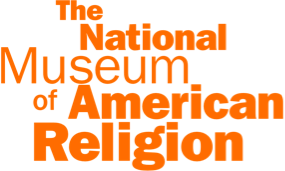Major Religions In The USA and Their Impact On American History
The United States of America has a diverse population with a rich, religious history. Europneas discovered a diverse array of indigenous beliefs and practices, and beginning in the 17th Century, many came to North America in search of a place to practice their religion freely. This led to the establishment of Plymouth in 1620 as a Separatist colony, Massachusetts and Connecticut as Puritan colonies, Pennsylvania as a Quaker colony, and Maryland as a Catholic colony. The adoption of free exercise of religion was adopted into the U.S. Constitution in 1791 and protection of religious practice has unfolded as a key tenet of U.S. law. This cultural and legal history has many different religions to flourish as citizens freely practice their chosen faith.
Christianity
According to the Pew Research Center, 70.6% of residents within the United States identify themselves as Christians. Within that group, the largest segment is composed of Evangelical Christians, comprising 25.4% of the nation. After that, the next largest Christian tradition is Catholicism, which represents 20.8% of the United States. The tenets of Christianity have been explored through a variety of denominations in the US. From events such as the First and Second Great Awakening, to Prohibition, to the impact of the Moral Crusades of the late 1980s, Christianity has played a strong role in the development of politics and culture of the United States. In 2011, The United States held the world’s largest Christian Population.
Judaism
Judaism is responsible for helping to instill principles of Freedom of Religion in the United States., According to the Jewish Virtual Library, Brazillian Jewish Immigrants secured the freedom to practice their religion in the Dutch Colony of New Amsterdam–which would later be captured by the British in 1664 and renamed New York. Since then, Judaism has remained at the forefront of American Society with influential figures in science, politics, and entertainment such as Albert Einstein, Henry Kissinger, and Hailee Steinfeld.
Today, the various branches of Judaism make up 1.9% of the total US population.
Islam
The New York Times estimates that about 50% of Muslims in the United States are born to practicing families, and the other 50% were born overseas and immigrated here. Because of this, Gallup stated in 2009 that Islam was “one of the most racially diverse religious groups in the United States”. Muslim representation continues to increase within the United States through public figures such as Ilhan Omar and Rashida Tlaib, who are the first Muslim women elected to serve in Congress.
An estimated 3.49 million individuals practice Islam in the United States, 65% of whom are associated with a form of Sunnism.
“Nones”
Surprisingly, the second-largest religious group in the United States are known as the “Nones”, or persons who don’t identify with a religious background. These individuals identify as either “unaffiliated” with a religion, Atheists, or even Agnostics. 22.8% of the U.S. population identify themselves as a “None”, and tend to be aged between 18-49 years old. The Pew Research Forum cites a variety of external factors such as generational replacement, political backlash, how this age group delays getting married, and changes in beliefs. However, Gallup Polls notes that older Millennials are finding religion again as they age. As “Nones” occupy a growing portion of the U.S. Population, they’ll likely continue to influence the way that American society and pop culture regard religious values in increasingly profound ways.
The diverse viewpoints provided by different religious groups within the United States help the country expand their viewpoints on freedoms we should all share–such as contributing to our history of Religious Freedom. Expanding our horizons have helped define how we see the good in each other and how we humanize each other. As we continue to explore the role of religion in America and the freedom that fuels it, the goal of The National Museum of American Religion is to show all what religion has done to America and what America has done to religion. This helps to preserve the ideal of religious freedom as a governing principle in the United States, and allow America to fulfill her purposes in the world. Learn more about our Mission, Vision, and Values today!
